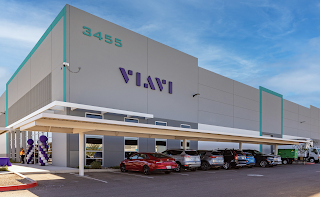Juniper Networks is opening a multivendor lab dedicated to validating end-to-end automated AI Data Center solutions. This lab will support automated operations with switching, routing, storage, and compute solutions from leading vendors. Juniper is also introducing new Juniper Validated Designs (JVDs) to accelerate the deployment of AI clusters, along with key software enhancements to optimize AI workloads over Ethernet.
A core component of Juniper’s AI-Native Networking Platform, the Networking for AI solution features a spine-leaf data center architecture with AI-optimized 400G and 800G QFX Series Switches and PTX Series Routers. Managed by Juniper Apstra and Marvis Virtual Network Assistant (VNA), this solution enhances AI workload performance through intent-based networking, multivendor switch management, and proactive AIOps actions. Juniper’s solution aims to reduce AI training job completion times (JCTs), lower latency, increase GPU utilization, and decrease deployment and operational costs significantly.
Highlights:
- Fabric Autotuning for AI: Uses telemetry from routers and switches to optimize congestion control automatically, enhancing AI workload performance.
- Global Load-Balancing: Provides real-time load-balancing of AI traffic to reduce latency, improve network utilization, and decrease JCTs.
- End-to-End Visibility: Offers a holistic view of the network, including SmartNICs from Nvidia and others.
- Ops4AI Lab: Located in Sunnyvale, CA, this lab allows customers and partners to test AI workloads with advanced GPU compute, storage technologies, Ethernet-based networking fabrics, and automated operations.
- Juniper Validated Designs (JVDs): These detailed implementation documents offer pre-validated blueprints for AI data centers, ensuring faster and reliable deployments.
The Ops4AI Lab represents Juniper’s commitment to openness and collaboration, moving AI Data Centers from early adoption to mass market deployment. The lab includes participation from partners like Broadcom, Intel, Nvidia, and WEKA, providing a platform for testing and validating AI workloads.
Juniper’s new software enhancements and JVDs further simplify AI cluster deployment and maximize network performance, offering unique value to customers looking to optimize their AI infrastructure.
Tech Update: What can AIOps actually do for networks?

Tech Update: Can AI proactively predict the user experience?



















